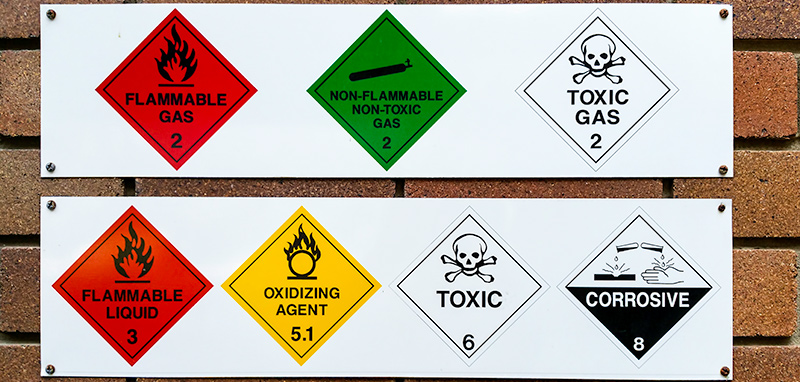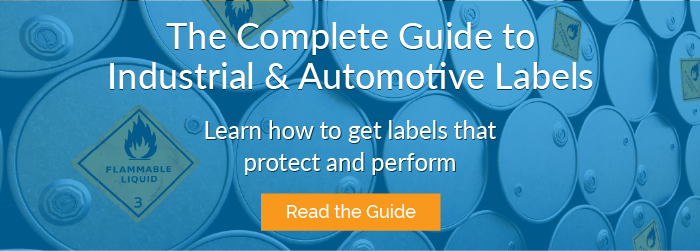
Compliance is about keeping people safe: your customers, your employees, our communities. It’s not about begrudgingly checking off some boxes to align with pesky regulations. Custom labels used for compliance purposes are critical safety devices, just as essential as seatbelts, steel-toed work boots, and protective goggles.
So, while labeling regulations may sometimes be difficult to interpret, they cannot be ignored.
Compliance Considerations for Custom Labels
It would be impossible in the space of this article to list every federal and state regulation, every industry standard, and every international safety guideline that can impact the design and form of a custom label. The regulations with which your labels must comply depend on factors such as your industry, your location, and the location of your customers.
We strongly recommend consulting with experts to ensure your products, components, and workspaces are properly outfitted with the right compliance labels. (A knowledgeable and experienced label printer should be able to provide guidance in this area.)
Among the fields where compliance labels matter the most are industrial manufacturers and automakers. Labels in these industries keep people safe from dangerous moving parts, harmful electricity, and caustic chemicals. They also keep toxins out of the environment and encourage responsible practices such as recycling.
Here are some common label-related standards your business might encounter:
Safety Colors
Standards for safety labels are set by the American National Standards Institute and described in the ANSIZ535 series. ANSI Z535.1 lays out the ink formulation and closest Pantone color for each of the safety colors: red, orange, yellow, green, blue, purple, white, brown, gray, and black. ANSI also sets color tolerances that illustrate acceptable ranges in hue, value (lightness), and chroma (saturation).
Safety Signs and Symbols
Safety labels speak in the universal language of graphical symbols to warn people about hazards. ANSI sets standards regarding the design, evaluation, and use of safety symbols to ensure they are uniform and deployed in a universally consistent manner.
ANSI also provides guidelines on the use of common warning words, such as “danger” or “caution.” ANSI standards address details such as the size, style, and placement of lettering.
To avoid any confusion or misinterpretation, make sure you use the correct symbols and words in your safety labels.
Chemical Label Requirements
Chemical labels must conform with the universal standards set by the United Nations in the Globally Harmonized System of Classification and Labelling of Chemicals (GHS). The United States adopted the GHS standards in 2012.
The GHS requires three standard label elements:
- A GHS hazard pictogram communicating physical, environmental, or health danger. Each pictogram is assigned a hazard class and category, such as “explosive,” “combustible,” “fatal or toxic if swallowed,” or “carcinogen.”
- A signal word, such as “danger” or “warning,” indicating the severity of the hazard.
- A GHS hazard statement, a standardized phrase that describes the danger consistently and accurately.
Other Compliance Concerns
There are countless other regulations to account for depending on the label, the product, and industry. For example, electronics products and components must be labeled with their operating voltage. Lasers must be marked with their class and magnitude. Graphical symbols for “on/off,” “sleep,” and “grounding” are standardized within systems like ISO 7000 / IEC 60417.
Other regulations, such as California Proposition 65 or the European Union’s Restriction of Hazardous Substances Directive (RoHS), require indicating if a product contains toxins.
And then, there are compliance labels that are voluntary, yet beneficial to a brand’s image For example, the UL marks that certify electronic devices or components have met the globally recognized testing firm UL's rigorous safety and reliability standards.
Are Your Compliance Labels up for the Job?
When labels are needed to keep people safe, it usually means there’s something dangerous in the environment, such as high heat, water, toxic chemicals, or moving parts. These things can be as harmful to unprotected labels as they are to unprepared humans.
A safety label can’t do its job if it wears off, peels, fades, rips, or otherwise becomes destroyed or illegible. Label materials, inks, and adhesives should be chosen for durability, and according to the environmental factors the label will encounter throughout its lifetime.
An experienced label printer will help you make these decisions.
The health and safety of your employees and customers are too valuable to leave to best guesses and unproven materials. When it comes to compliance, it's important to work with a label printer that understands your industry's regulatory requirements and has the knowledge and technology to help you craft a label that will hold up under the most rigorous conditions, day after day.
Click here to get in touch with the label compliance experts at the Label Printers.

